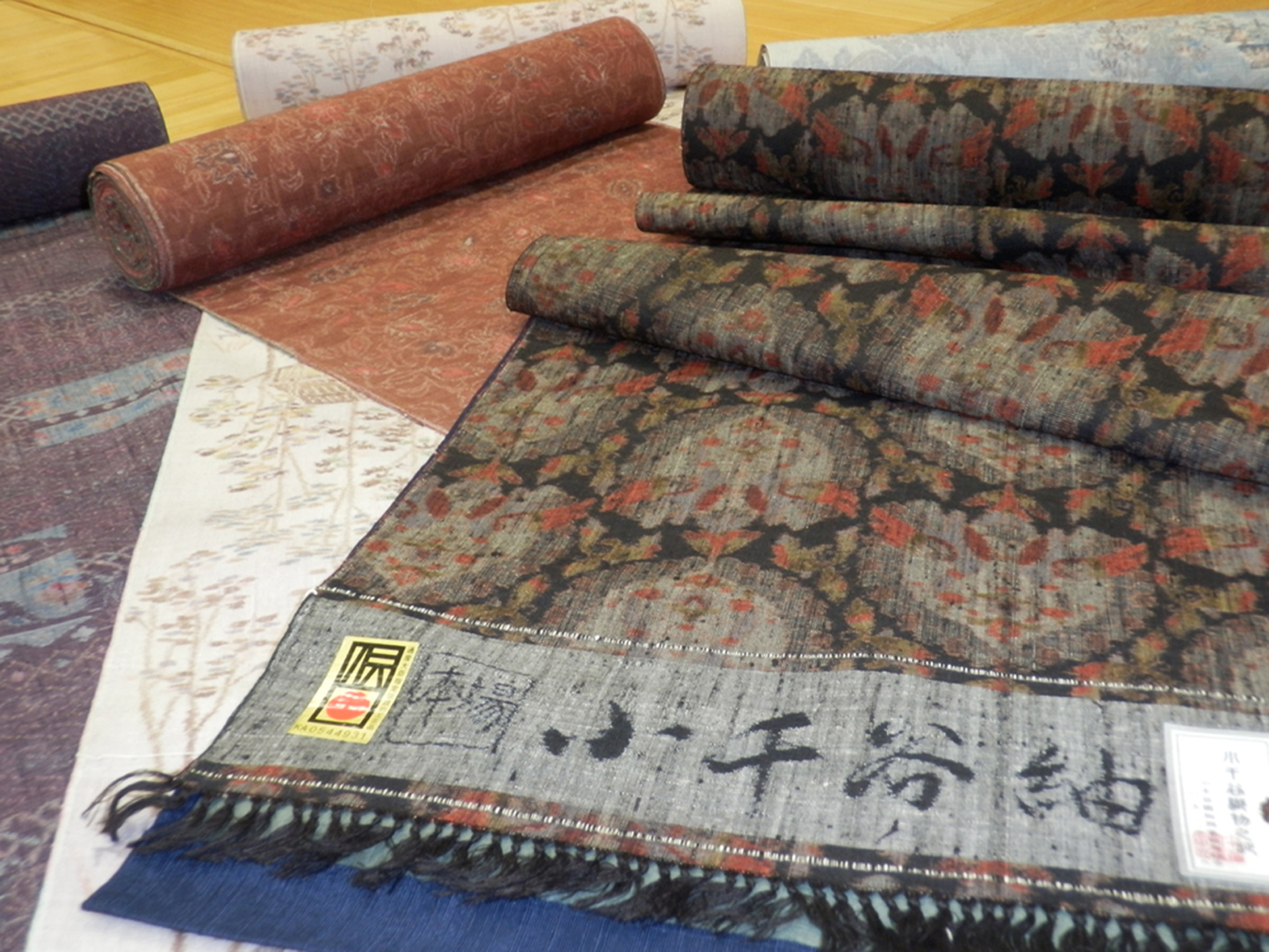小千谷紬
Pronunciation: Ojiya-tsumugi
Production area: Ojiya City, Niigata
Ojiya-tsumugi is a silk textile developed in the mid-Edo period by adapting the weaving techniques of Ojiya Chijimi. It has long been woven in stripes, kasuri patterns, plain colors, and also white tsumugi. The raw materials are tama silk and handspun floss silk, which give the fabric the glossy sheen and supple warmth characteristic of silk.One of its defining features is the use of Surikomi-gasuri (rub-dyed ikat) for creating intricate weft kasuri patterns. Artisans use a Kohane-jogi (wooden pattern board), made by bundling thin sheets of cardboard and transferring a design onto them, to mark the weft threads (Sumitsuke, ink marking). Dye is then rubbed deeply into the yarn along these marks to achieve precise coloration. This traditional method of producing kasuri with Surikomi-gasuri, using a Kohane-jogi, is one of the conditions required for Ojiya-tsumugi’s designation as a Traditional Craft of Japan in 1975.
The Beautiful Colors of Ojiya-tsumugi
The distinctive patterns of Ojiya-tsumugi (silk pongee) are mainly created through the technique of surikomi-gasuri (rubbing-in ikat). Thin cardboard sheets are stacked and bundled together, onto which the design is transferred to make a tool called koba-jōgi (pattern guide). Using this tool, marks are placed on the weft threads (sumitsuke, ink marking). Following these marks, colors are carefully rubbed into the threads so that the dye penetrates deeply. This method of marking the weft threads with koba-jōgi and producing the ikat pattern with the surikomi-gasuri technique is one of the conditions required for Ojiya-tsumugi to be designated as a Traditional Craft Product.

Photo courtesy ofPhoto courtesy of Ojiya Textile Weavers Association



















